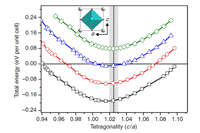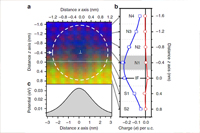According to Jeng, advances in our understanding of the physics of the semiconductor interface was undoubtedly one of the most important scientific and technological achievements in the twentieth century. In 2002 scientists accidentally discovered that the oxide interface can also produce a two-dimensional charge, resulting in the establishment of a new field in condensed matter science identified as “oxide interface physics."
Over the following decade researchers began to investigate the similarities and differences between the oxide interface and the semiconductor interface. In contrast to the relatively mature field of semiconductor electronics, oxide electronics is still an emerging field and has become a focus of recent research in the condensed matter sciences. One of the key areas of research has been on the effects of strain and defects on the two-dimensional charge of the oxide interface.
Using calculations based on the aggregate energy theory, Professor Jeng discovered the role of the charge-reservoir in the dislocation strain field. He also discovered that its physical mechanism in the stress field comes about through the interaction between the lattice deformation and the orbit of the three-dimensional manganese electrons. This not only makes the charge-reservoir more resilient, but also causes the energy distribution of the one-dimensional electrons to be relatively lower than that of the two-dimensional electrons. This led to the discovery of "electronic condensation," as well as the establishment of new directions for research in the field of oxide interface physics.
Jeng's research was conducted in collaboration with research teams at National Taiwan University's Center for Condensed Matter Sciences led by Lin Zhaoyin and Zhu Mingwen.
This groundbreaking study in the highly competitive field of oxide interface physics was conducted entirely in Taiwan. Published in the March 2014 issue of Nature Communications, under the title of "Condensation of two-dimensional oxide-interfacial charges into one-dimensional electron chains by the misfit-dislocation strain field," their discovering has received considerable international attention.




